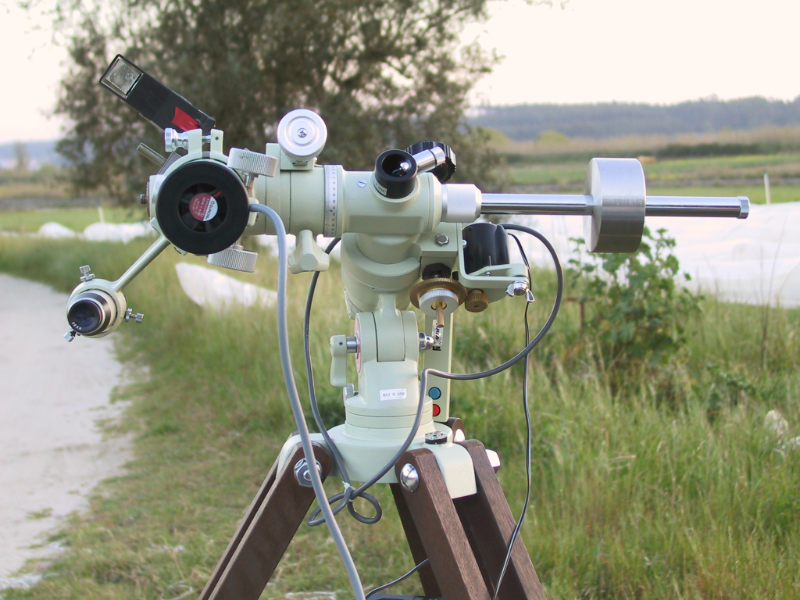
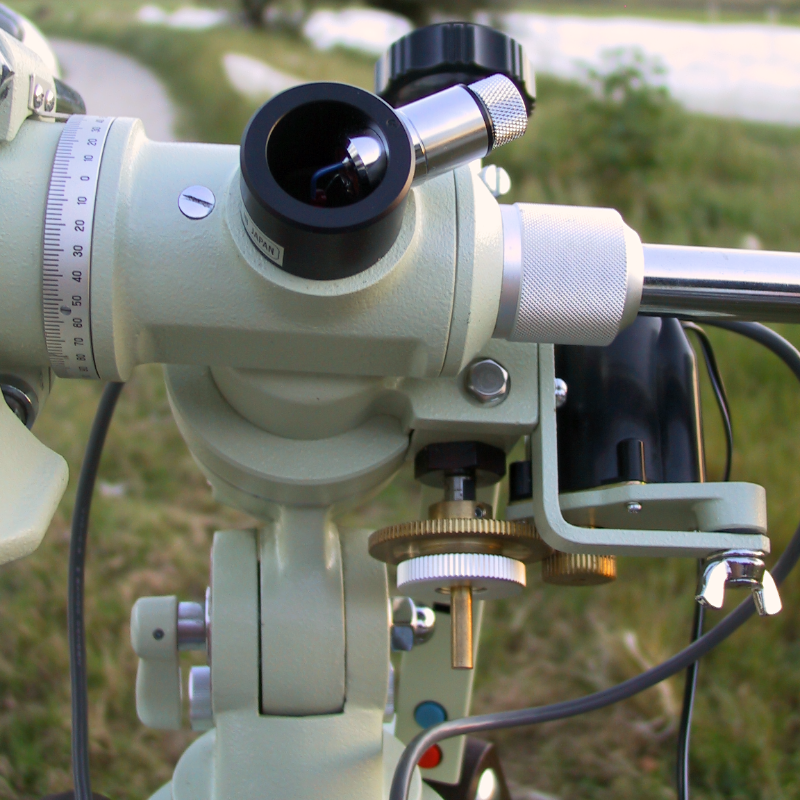
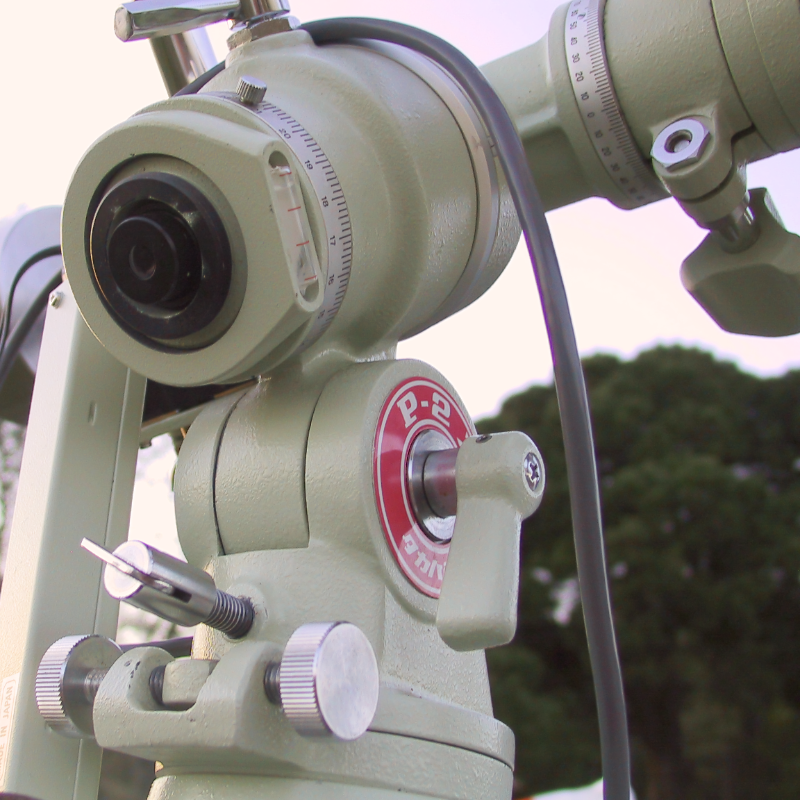
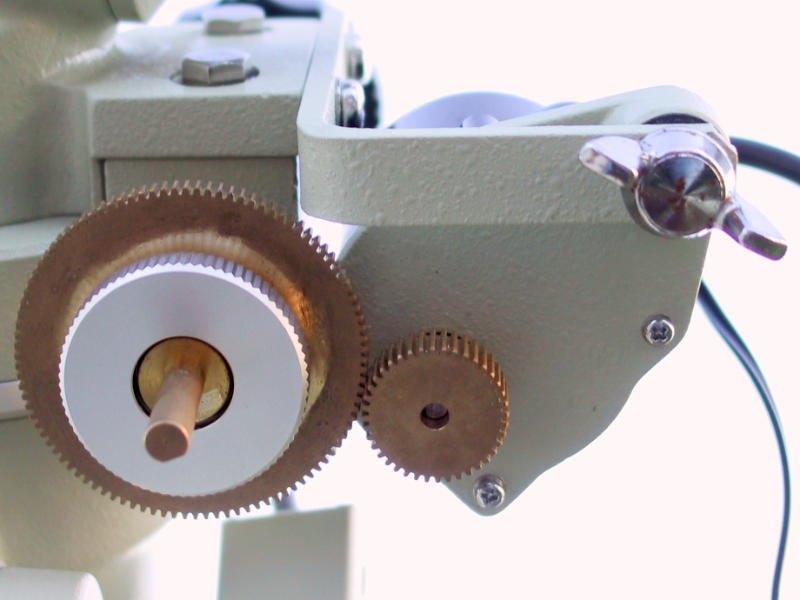
The Takahashi P2-Z is a small manual equatorial mount that can be motorized on the right ascension (R.A.) using the HD-5 motor. The "Super Eclipse Mount" designation denotes that was designed to be portable, since eclipses rarely happen over usual observation sites.
As this link says, this mount had its first appearance in 1979, being the 3rd generation (the previous generations had been the P-2 (1971) and P-2s), being the mount reviewed from the year 1994. This mount belongs to the family pre-EM (Electric Movement), and was designed by one of the founders of Takahashi, of which the Space Boy and the reference mount Takahashi NJP (New Jumbo Polaris), from which borrowed the declination gear and worms that are used on the P2-Z RA axis, along with the notourious resemblance, being one of the of "old" school's mount.
Mount:
R.A motor (HD-5):
The P2-Z is an basic equatorial mount. It has knobs for precise manual movement for each of the declination and right ascension axis and altitude and azimuth adjustments using screws for fine polar alignment adjustment.
It is constituted by three parts : the head, the counterweights shaft and the tripod adapter. The Hd-5 motor, although external , does not need to be disassembled, and generally remains permanently installed on the mount's head . The same happens with the tripod adapter that is always mounted on the legs. After two screwings, it's only needed to add the counterweight(s) and the chosen instruments.
The R.A. motor Hd-5 is an motor of high torque and precision that can optionally be mounted on the mounts of the same family (Space Boy and JP90, NJP160 use others). Being a external motor, it engages on an gear on the R.A axis. There is an general opinion that external motor and gear are not very advisable on harsh environments, but I don't find it to be a problem and, to me, adds a great "retro-technological look" to it. The necessary power can be provided from a small case of 4 D 1.5V batteries that will assure at least 20 continuous working hours . With an gel 7ah battery there is enough energy for weeks of normal use.
The color is typical Takahashi's pastel green contrasting with chrome and anodized parts, being the used materials and finishing beyond any expectation. The design is (for me) elegantly classic and gives the general feeling of a machine build to last a lifetime. This one is confortably packed in a Pelican 1550 case.
    |
No mount's description with some astrophotograhic pretensions would be complete without an analysis of its most important mechanical characteristic - The periodic error . The test was conducted using a star close to the celestial equator while transiting the meridian. The sampling was 1.1 seconds of arc.
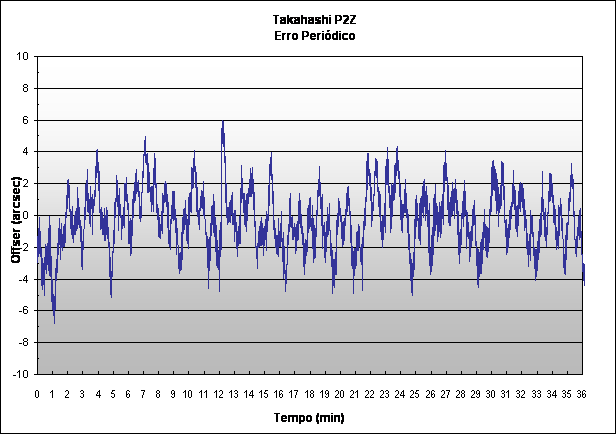
|
The periodic error oscillates comfortably on the +-5" interval, well inside the manufacturer's specification, with the extra bónus of long periods of +-4 seconds of arc or more properly 8 arcseconds periodic error. I would risk on a efective period between peeks about 4-5 minutes, a bit odd because the worm period should be 10 minutes ( 86164sec/144 tooth).
Despite the lack of modern arguments, like PECs, the mount is well compensated by "old" arguments that are currently being somewhat neglected by the manufacturers, such as high quality worms and gears instead of delegating the precision to electronic corrections. Even Takahashi already relaxed their standards on the more recent series of small-medium mounts (EM-2 to EM-200), already presenting values between +-7" and +-10", but those are said that can be easily "autoguided out".
I do not have knowledge of a mount of this size with periodic error of this class (+/- 4"). This type of performance is generally reserved to exceptional mounts that are usually much bigger and several times more expensive. The P2-Z is small, but has a "heart" of the great mounts not passing any shame when compared with any quality mount on purely mechanical performance . This fact, along with a good polar alignment, can excuse the PEC and autoguiding for resolutions of 2"-3" for some minutes of CCD exposures - I believe that little more can be asked to a completely mechanical system, and for all the rest, that is enough for the functions that I intend to undertake at the moment.
Like all Takahashi's mounts until now, this one does not have PEC (Periodic Error Correction) but the more modern ones have option for go-to. Unhappyly (or happily) this is not the case of the P2-Z, it can only can have an R.A motor, therefore without being able to motorize (at least officially) the declination axis. This also validates the reason of not possessing an auto-guider port.
This below text is based on the impressions after one year of more or less intensive use on the field, including dozens of setups, packings and alignments totalizing probably more than 100 field hours of use, time that I think quite sufficient to have a well formed opinion.
Only 5 minutes are necessary to setup and to polar align with enough precision for deep sky image CCD up to 2"of resolution. On visual use it is equivalent to a star centered without practically moving for hours ...
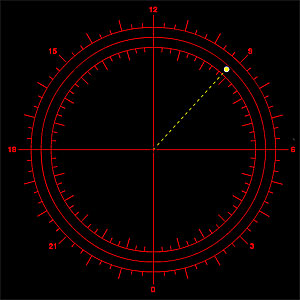 The method of the polar alignment couldn't be more charmingly simple.
The method of the polar alignment couldn't be more charmingly simple.
After knowning the site's longitude, correct local time, a calculator and using the illuminated polar finder (of variable intensity witch is usefull to isolates the Polaris on dark skies) it is only needed to place the polaris on its hour angle. It is necessary to calculate the local sideral hour (calculation somewhat tricky if made by hand), but a convenient application exists (compatible with all operating systems) that exactly emulates the finder's reticule, only have to place the polaris on the position drawn ( click on the image to execute). Another alternative is to use for a planetarium or spreadsheet on an handheld computer.
An important characteristic is that is not mandatory the tripod to be leveled, a feature that saves some time on the field. This is possible because the mount has a bubble level on the equatorial axis, allowing to independently level the head regardless the inclination of the tripod base. A simple as ingenious solution and great value on the field. It is convenient to proceed the alignment with counterweights and instruments already on the mount, to prevent any oscillation caused by the additional weight, especially over not very solid grounds. To notice that the complete mount, telescope and accessories (excluding the tripod) can reach close to 15 kg (35 pounds). The mount is storaged in a Pelikan 1550.
Actual use is very simple: after being polar aligned, unlock both axis, point the telescope to the pretended target, lock the axis, observe or image. If needed, adjust with the manual controls (in the case of manual adjustment in A.R. it is necessary to ungear the motor) and engage the motor where it is only neede to lean an gear wheel to another.
The use of setting circles is possible, but due to its size and scale, don't allow to reach great pointing precision , although normally the object will be inside of a field of 1º. See here how to use the setting circles.
It is convenient to verify at least once if the level bubble it's leveled with the polar finder's reticule. This procedure is quite simple, and should be necessary to be made only once, or if for some reason the level's ring get loosed.
The usually used telescope is the same brand refrator Takahashi Sky-90, complete with an eyepiece, diagonal mirror and other accessories totalizes a 5kg load (11 pounds). Personally, I would not place much more weight on the mount, but already have it loaded with an excess of 2 or 3 kg without having represented a great effort, but the movement already felt somewhat heavy, specially on the declination axis. With this kind of loads and magnifications that vary between 20x-250x, the mount behaves very well, and in general, with soft and precise movements. For magnifications over 200x are acceptable, but it is advisable to lower tripod legs to increase the solidity of the setup (I use the Takahashi FC-M legs and also adapted the Berlebach UNI 18). The tracking precision is more than enough to keep hours any target on the field of the ocular at big magnifications.
On CCD astrophotography it is possible to achieve, without practically losing any frames, 2 minutes exposures at 3" or inferior resolution, this by using only the above described polar alignment. The performance also depends on the position of the tube and mount's balance , being able to do exposures superior to 2 minutes. Anyway, it provides exposure times that can be considered decent. Some examples of images can all be seen here and generally peppered all over the Patio.
An annoying detail of use is not being possible to make manual adjustments on A.R. when the motor is engaged - two hypotheses exist: to ungear the motor and risk to lose the object on the CCD's field CCD and then to be able to use the knob to manual adjust, or, else to center the object with the astonishing speed of 2x sidereal with the hand command that besides this speed has another one: stopped). Despite this difficulty that sometimes can make you lose some time (or the target), there is nothing else more to notice.
Another limitation is not to have other tracking speeds , for example, a lunar rate to follow a lunar eclipse better, or a close comet. Although useful, it would not be enough because would be also necessary to correct on declination, and that would require one (micro) computer to implement this tracking correctly, and a declination motor also.
For those reasons, this mount will not serve the needs for all, i.e: for who it intends to do autoguided astrophotography or for who it does not have time or patience to find the objects manually.
Specially at astrophotography, the go-to capacity has the double function pointing fast and to prevent the refocusing for each time the targets change, saving only on these two aspects quite much of valuable time.
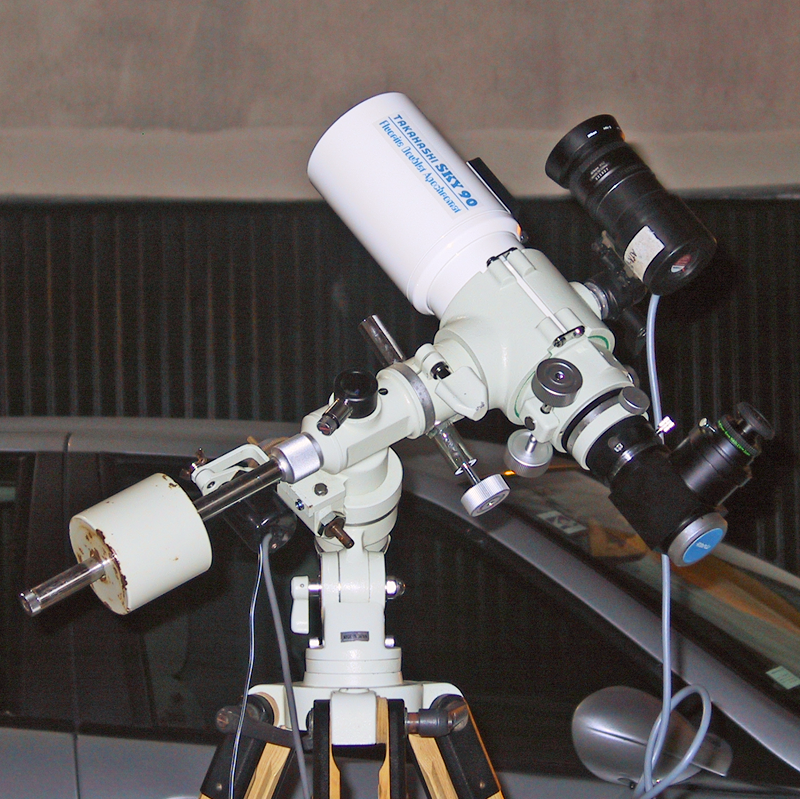
|
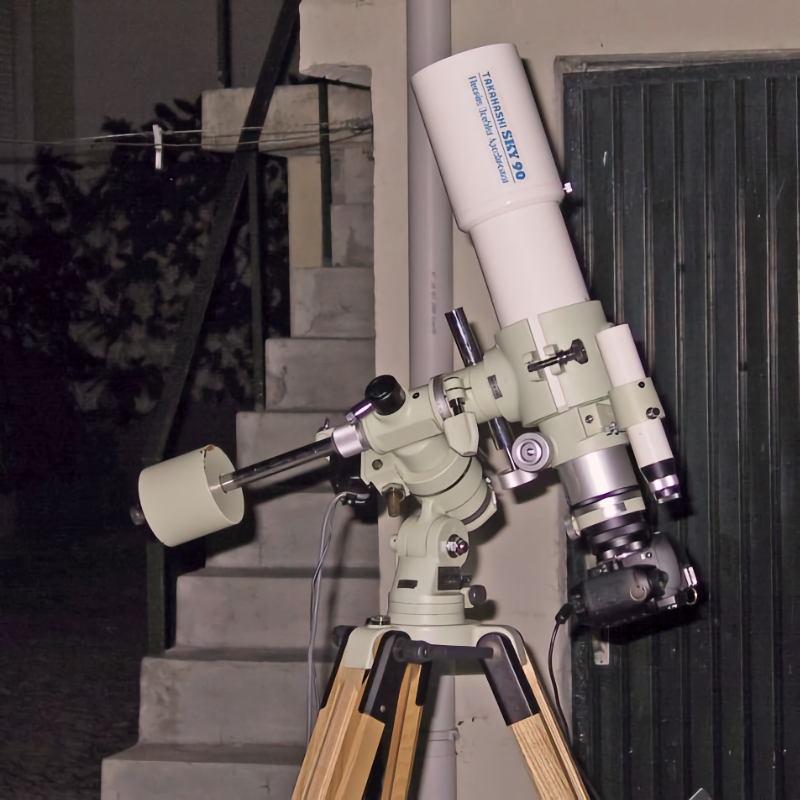
|
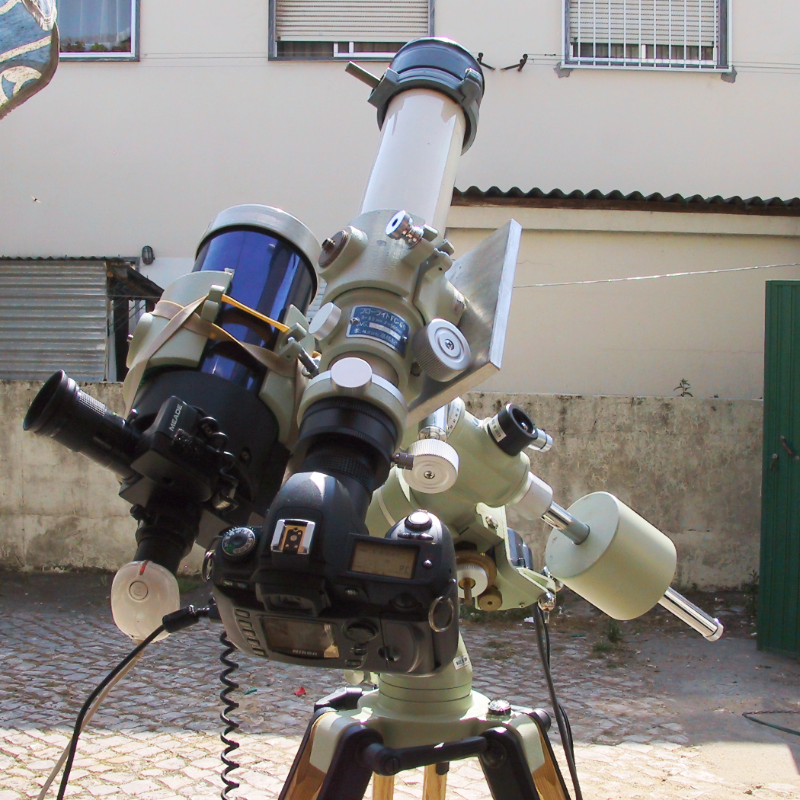
|
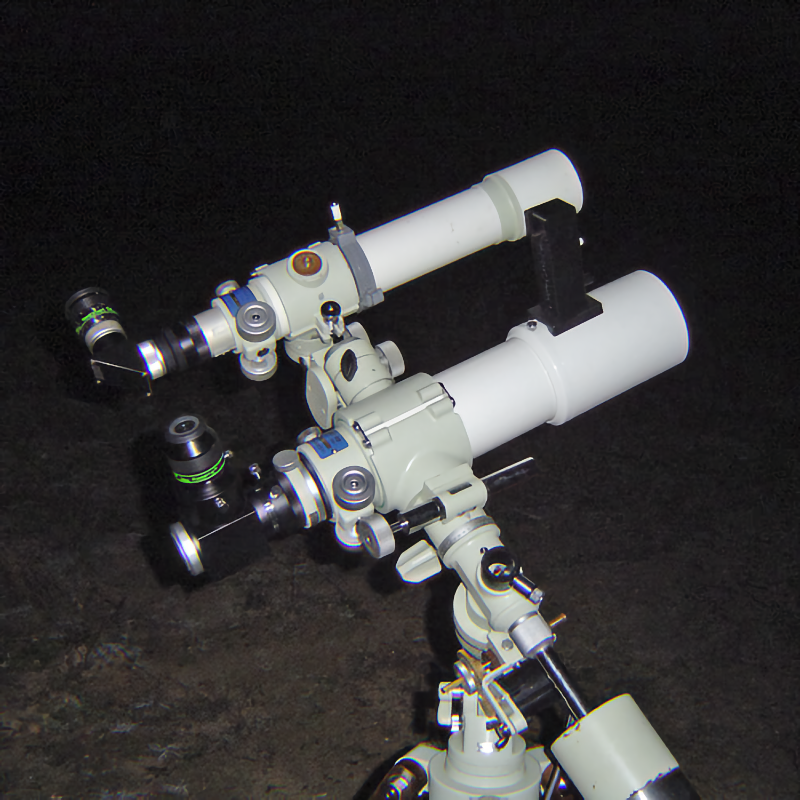
|

|

|
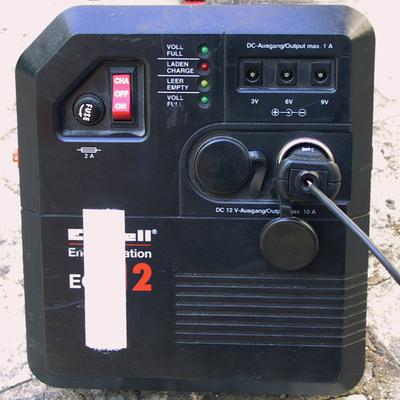
|
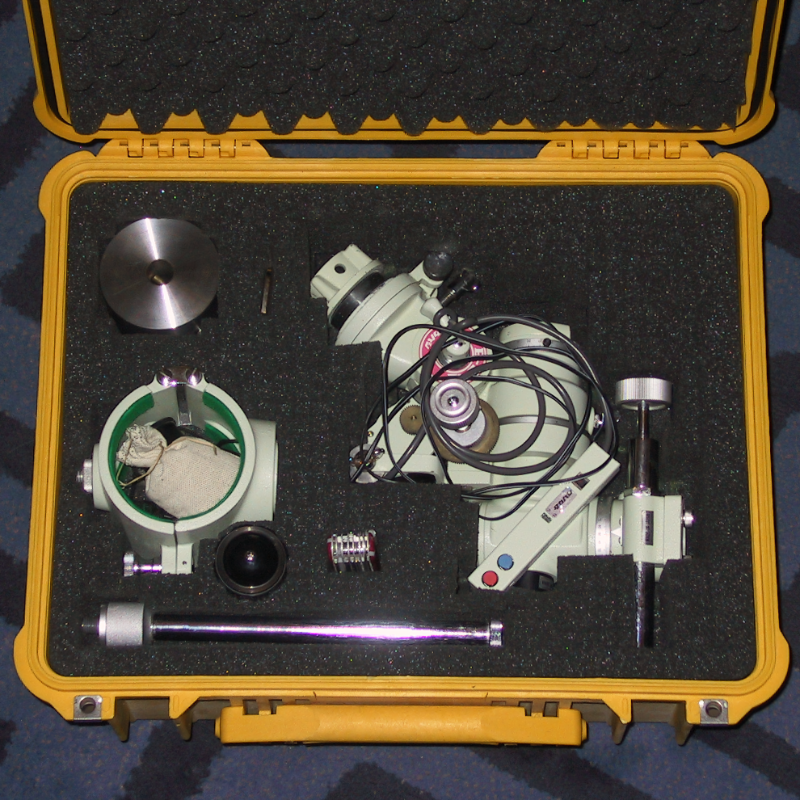
|
I consider the design, portability, simplicity, reliability, precision and robustness of this mount exemplary.
Making an analogy with a clock, it would be certainly equivalent to a manual winding swiss chronometer , where isn't important having to wind it every two days, or if it is less accurate than a $25 quartz clock. What matters is the pleasure "of winding" and to know that you can count on the precision of a small mechanical work of art. And the price, like for a mechanical swiss chronometer becomes somewhat irrelevant (but for the curious can be seen here)
Luís Carreira, March 2005